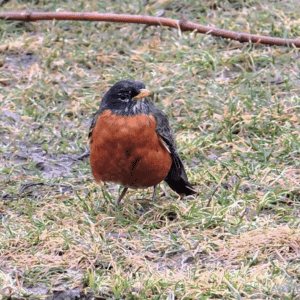Amazing Alliums
Onions and garlic are just a start to the greatness that is the Allium family!
In this article, you will gain more familiarity with their uses in the garden, kitchen, medicinal, and wild, with recipes, resources, and much more! Join me on this adventure!

Members of the Allium family certainly are not unusual in our lives; in fact, their consumption can be traced back to the Bronze Age. The National Onion Association has wonderful information about their history, usage, guides on choosing the best, and even recipes. From spicy to mild, their versatility goes beyond the kitchen. Let us first explore what we know of members of the Allium Family.

Common Onions ( Allium cepa ) are the staple of what many of us think of first when discussing members of the Allium family, which is reasonable considering that they are the most widely cultivated. From sweet to strong, they have so many uses and varieties available. Yellow or Brown onions are all-purpose and dominate our market with varieties like Vidalia and Walla Walla known for their sweetness. Red or Purple onions are known for having a sharp and pungent flavor used raw or for grilling. White onions are frequently milder and used for salsa and also grilling. These common onions store well overall but are also pickled, frozen, canned, and dehydrated.
Garlic ( Allium sativum ) has long been used as a seasoning and comes in two varieties: soft or hard-neck, each having benefits. Soft-neck garlic is more common in warmer climates. It is sometimes braided into string plaits and suspended to assist in drying long term. Hard-neck garlic needs a chill and is not capable of being braided. Hard-neck cloves are larger and fewer, but soft-neck cloves have longer storage. I personally am a garlic enthusiast and look forward to cultivating more this year.
Chives ( Allium schoenoprasum ) are a mild-tasting green used for flavoring. They are an easy-to-grow perennial option that can be tucked into herb gardens, containers, or vegetable plots. They produce several lovely flower bundles that are attractive to pollinators. They should be removed before going to seed; otherwise, they tend to spread beyond most people’s tolerance. Scallions , also known as Green Onions, Bunch Onions, and Spring Onions, are not chives but immature common onions, useful for their green stems and leaves. Although similar in appearance to chives, they are more pungent.
Leeks are a cultivar of Allium ampeloprasum , and have a mild onion flavor; they are used not for the bulb but the long stem with bundled leaves. They are frequently chopped and placed into soups (my preference).

For me, growing Alliums is easy and often a “plant and forget” type of endeavor. They do reasonably well as long as they have nutrient-rich soil, full sun, and good drainage. Harvesting is straightforward with a careful trowel to avoid spearing the bulbs and scissors for any greens. Garlic and onions can be dried slowly away from the sun in a covered location and allowed to form the papery skin they are famous for.
From my own experience, I have enjoyed growing various members of the Allium family. I have three types of chives in my herbal garden, various hard-neck garlic varieties in my orchard, and bulb onions are frequently added to whatever space I can tuck them into. I absolutely love taking what I grow outside and bringing it to the kitchen for various recipes and other uses. The many ways Alliums can be cooked and utilized for their culinary value are marvelous. I chop them into salsa, grill them on kebabs, saute them with asparagus, use powder to season my scrambled eggs, and on and on. I look forward to adding leeks this year and will start onions from seed and planting bulbs later this month.
Got a Recipe / Preservation method? Share!
Lacto-Fermented Salsa Base
by Karen Geiser, who spoke at the NLHG Ohio National Gathering!
This is a delicious salsa using the fermented base, plus fresh tomatoes. Tomatoes don’t ferment well and are much better added fresh but the green peppers and onions make a delightful ferment that give the salsa a probiotic punch.
INGREDIENTS for a 1 quart jar
About 3 1/2 cups total of chopped green pepper (can include some jalapeno if desired), chopped onion, chopped celery, and chopped garlic
(OPTIONAL) 1tsp chili pepper flakes, 1 tsp dried coriander, & 1 tsp dried oregano
DIRECTIONS
Combine all ingredients in a bowl. Make a brine using 1 tbsp salt mixed in 3/4-1 cup water. Pack vegetable mix into quart jar and pour over brine to cover vegetables leaving a 1 inch head space. Put a cabbage leaf on top, tucking it under the jar shoulders. Put a lid or use an airlock system and let ferment at room temperature for 3-4 days. Put on regular lid and put in cold storage. To prepare salsa, chop fresh tomatoes and fresh cilantro (if desired) and add to the salsa base. Drain before serving. The liquid can be used in salad dressing, etc.
I’m also a bit of an enthusiast about Alliums because of their uses beyond the dinner table.

Medicinal uses within this family are vast and still being studied. The major therapeutic effects of onion are extensive, and garlic is also listed with markers to fight disease and cancer. It is no surprise that Fire Cider, a tonic taken daily in the fall to ward off flu and cold (along with other benefits) has both onion and garlic. My Sandusky County, Ohio NLHG Chapter is preparing to do a Fire Cider workshop, which is very exciting!
Providing a remedy for leg cramps, sore throat, stuffy nose, stomach problems, fever, exhaustion, fungal infections, and heartburn, apple cider vinegar alone has a lot of benefits for our usage. Combining apple cider vinegar with other ingredients to make Fire Cider is an easy herbal household item to help relieve and heal from colds, respiratory issues, energize the body, raise immunity, and aid in circulation.
ROSEMARY’S ORIGINAL FIRE CIDER
Ingredients
- 1/2 cup grated fresh horseradish root
- 1/2 cup or more chopped onions
- 1/4 cup or more chopped garlic
- 1/4 cup or more grated ginger
- cayenne pepper, fresh (chop it up) or dried (flaked or ground), to taste
- Apple cider vinegar (preferably raw and organic)
- Honey
DIRECTIONS
Place the herbs in a half-gallon mason jar and add enough vinegar to cover them by 3 to 4 inches. Seal the jar with a tight-fitting lid. Place the jar in a warm spot and let sit for 3 to 4 weeks. Shake the jar every day to help in the maceration process.
After 3 to 4 weeks, strain out the herbs, reserving the liquid. Warm the honey (so it will mix in well) and add it to the vinegar, to taste. “To taste” means your fire cider should be hot, spicy, and sweet. “A little bit of honey helps the medicine go down…” The honey also helps cool the heat, moistens, and balances all the fiery ingredients.
Bottle, label, and enjoy! Fire cider will keep for several months un-refrigerated if stored in a cool pantry. But it’s better to store it in the refrigerator if you have the room.
A small shot glass daily serves as an excellent tonic. Or take the fire cider by teaspoons throughout the day if you feel a cold coming on. Take it more frequently, if necessary, to help your immune system do battle.
I felt the need to go onion and garlic crazy this month and try to push this adoration of the Allium family onto others so that they too could incorporate them into their gardens and benefit from their uses.

Members of the onion family are wonderful at reducing pests in the garden with their odor; being a critical role in your vegetable gardens to improve your harvests. Also in permaculture, they can be used to keep your fruit trees protected from rodents and deer. They can even help to deter mosquitos. Aesthetically, the plants themselves add interest and variety to your plantings. Some plants do exceptionally well alongside members of the onion family while others are poor choices.
GOOD COMPANIONS
- LETTUCE
- TOMATOES
- TURNIPS
- CABBAGE
- KALE
- BROCCOLI
- CAULIFLOWER
- BRUSSELS SPROUTS
- KOHLRABI
- BEETS
- STRAWBERRIES
- SWISS CHARD
- MELONS
- CARROTS
- SUMMER SAVORY
- CHAMOMILE
BAD COMPANIONS
- PEAS
- BEANS
- SAGE
- ASPARAGUS
- OTHER ALLIUMS
NOTES
Early spring is a general time frame for onion planting, although hard-neck garlic cloves are planted in the fall. Depending on the variety will also determine your schedule. Most onions though should be planted 6 inches apart in rows with 12 inches between the rows. Full sun with fertile soil that drains well. Soil PH for garlic is 6.5-7.0 and onions are 6.0-6.8.
With all the benefits of the Allium Family and our familiarity with them, it is important to also recognize and understand the species that grow native to North America.

Imagine having the benefits of the onion family as a hearty perennial, an early spring food source to be foraged, having varieties that grow in both shade and sun, and also have a beneficial environmental impact to preserve our nation’s biodiversity. We find this in our many native plants! Members of the onion family are found almost everywhere.
Most of my research on native plants has been selective to those that are within my range of Northwest Ohio, but I was delighted to research the options across our nation and excited with how many unique species there was. The following link is useful to discover some of the options that are available where you live, also including which ones are invasive and non-native species. ALLIUM RANGE MAP
IDENTIFICATION is one factor of foraging that I will always stress, and especially in spring when many plants are just emerging; various species can look similar. Even herbs like Lemon Balm, Catnip, and Horehound have similar leaves when they emerge, although very different aroma when the leaves are crushed. This is the major factor to identify members of the Allium family; their smell! Cultivated onions and garlic certainly have that familiar sharp pungent aroma, and native onions are no different. If you have issue with smell, I would recommend having another to verify your foraging. Unfortunately there are some heinous plants out there to avoid that may look like Alliums, but none of them smell like onions. IDENTIFICATION OF ONION VS DEATH CAMAS

Widely distributed across the USA, Nodding Onion is edible in all parts but advisable only to consume bulbs in low amounts. They are highly beneficial for attracting native bees and also predatory insects that go for pests in the garden. Attracts the Hairstreak Butterfly and other pollinators as well, making it a great addition around vegetable beds.

I absolutely adore Ramps and it is easy to enjoy their charm as an edible wild onion. Growing in rich moist woodlands of the Eastern USA, their shade loving ways are beneficial to cultivate colonies for long term land sustainability. Slow to develop, and I recommend harvesting only one leaf per plant, or less than 40% of an established group since they take time to cultivate.

Tapertip Onion is found west of the Rockies and it is said that the stalk has more enjoyable flavor for cooking. Geyer’s Onion is another Western variety that unfortunately I do not have much culinary information on; if you have experience with either of these species, please discuss your knowledge!

Canada Onion is listed as a choice edible, although readily distributed across much of the USA and native; many would wish to avoid it in their livestock pastures. Twincrest Onion is another I am not familiar with on edibility, but has listed food usage. Prairie Onion is another noted for flavor and use overall; ranging out west and even noted as attracting hummingbirds!
Adventure awaits allies of the Allium family!
I’ll admit that I’m an absolute goober when it comes to the onion family, and I likely will never have any vampire infestations with my growing garlic obsession, but I hope you obtained some new information with this article, and that it provides a springboard towards greater goals, research, and explorations! Thank you for joining me!





